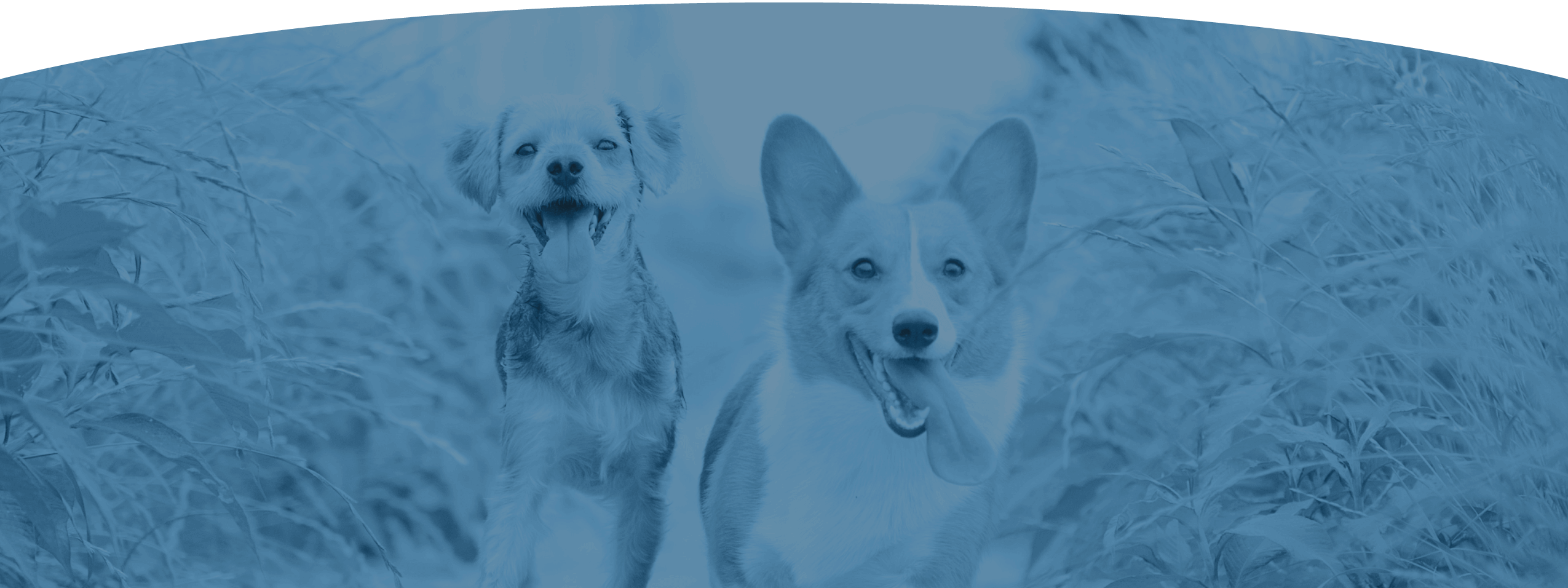1. What is the Cranial Cruciate Ligament?
The cranial cruciate ligament (CCL) in dogs is the same thing as the anterior cruciate ligament (ACL) in humans—it’s a tough band of tissue that connects the two main bones of the knee joint. The CCL attaches the upper bone (femur) to the lower bone (tibia) and helps to stabilize the joint and prevent excessive motion between these bones. A ruptured CCL is the most common orthopedic injury in dogs, and results in a painful and unstable joint. If left untreated, a ruptured CCL will lead to progressive and irreversible degenerative joint disease.
2. Why did my dog rupture this ligament?
Typically, there are two ways a dog can rupture their cranial cruciate ligament. The first way is similar to a sports injury in humans. Like a basketball player who plants their leg aggressively and then tears their ACL, a dog’s CCL may suddenly rupture from excessive force or exertion. Alternatively, years of normal wear and tear can leave the ligament weak and prone to full rupture at some point. We don’t always know exactly why or how a ligament ruptures. Some dogs begin limping after playing aggressively in the park, while others simply step off a curb and begin limping. We do know that obesity appears to be one of the most important predisposing factors in CCL ruptures, as excess weight can cause further strain on ligaments. One more reason to mind those treats!
3. Why does my dog need surgery?
When a dog ruptures their cranial cruciate ligament, the joint becomes unstable. When weight is placed on an unstable knee, it causes a shearing force on the joint. This is not only painful, but also potentially damaging to the cartilage in the joint. This abnormal shearing movement (called “tibial thrust”) predisposes the cartilage in the knee to damage and promotes arthritic changes within the joint. These changes often become painful enough to render the limb mostly useless, especially in larger dogs. Surgically repairing the knee joint provides stability, reduces pain, and decreases the rate of further arthritic damage.
It’s important to note that when one CCL is ruptured, a dog will naturally transfer most of its weight to the other leg. In doing so, they inadvertently put the other CCL in danger of rupture due to overuse. If a dog has tears in both cranial cruciate ligaments, simple tasks such as rising, walking, and squatting to urinate or defecate become very difficult, and the dog’s quality of life may suffer. This is one of the many reasons why it’s recommended to properly address a torn ACL as quickly as possible.
4. Which procedure is best for my dog?
Every case and every dog are different, and there are many different factors to consider when looking at surgical options. Both TTA and TPLO procedures have pros and cons, and the best choice for one dog might not be the same for another! Your veterinarian will work with you to ensure that you’re fully informed of all your options and will make recommendations based on what’s best for your pet.
5. I have been told that my dog may eventually rupture the cranial cruciate ligament in the opposite leg. Is this true?
Statistically, yes. Studies have shown that 40-60% of dogs that rupture one cranial cruciate ligament will eventually rupture the other one as well. This is likely due to a combination of factors including obesity, genetics, and continued wear and tear on the ligaments over time.
6. What can I do to lower the chance my dog will need surgery in the opposite leg?
Obesity is one of the most important contributing factors in cranial cruciate injuries. If your dog is currently overweight, focus your efforts on a prescribed weight loss program. If your dog is at a healthy weight, keep up the good work. If you’re not sure if your dog is obese, just ask one of our veterinarians—they’ll assess your dog’s current body condition score, explain what it means, and help with a new diet plan if needed.
7. What can I do to speed up my dog’s recovery?
Just like humans who undergo knee surgery, dogs will benefit greatly from a physical therapy plan following ACL surgery. After your dog’s surgery, we’ll provide an 8 to 12 week physical therapy plan that outlines daily exercises to help your dog heal faster and return to normal function sooner. We’ll explain the plan thoroughly both before and after the procedure, and we’re happy to demonstrate the prescribed exercises so you feel comfortable doing them with your dog during their healing period.
We know it can seem like a lot. But from start to finish, we’re committed to supporting both you and your dog to achieve the best possible outcome following surgery!
If you have any questions or would like to schedule an orthopedic consultation, either give us a call at (307) 684-2851, or request an appointment online.
